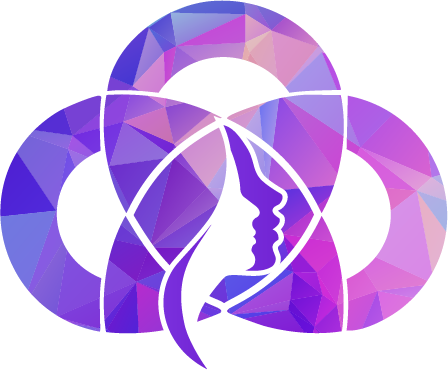What is the definition of menopause?
Menopause describes a single second of time.
Menopause occurs at the exact moment in time that your ovaries fail and can no longer produce any ovarian hormones.
If menopause describes a moment in time, what happens the moment after menopause occurs?
The moment after menopause occurs, the ovaries can now be described as menopausal.
Only ovaries can be menopausal.
It has become customary for a woman to say, “I’m menopausal” or “I’m in menopause”, which is inaccurate.
To be accurate, a woman would say, “I have menopausal ovaries”.
The word, menopause, is a combination of two words, meno = month and pause = cessation referring to the end of monthly cycling of the ovaries.
Because the definition of the word, menopause, refers to the ovaries, it is ovaries that become menopausal, not women.
Does a disease cause the ovaries to become menopausal?
No, ovaries become menopausal from ovarian failure or from surgery to remove the ovaries or from damage from autoimmune diseases, infection, injury or chemotherapy.
Does ovarian failure happen naturally?
Yes, our ovaries, just like our other organs, will age and eventually fail. Since ovarian failure happens as a result of normal aging, it can be described as age related ovarian failure.
Why does ovarian failure happen to women in the prime of their lives?
Like all normal organ failures, ovarian failure occurs as we age.
Just 300 years ago, ovarian function lasted a lifetime because women lived to an average age of 48.
For a woman who lives to 48, ovarian failure doesn’t happen in the prime of her life. However, for a woman who lives into her 70’s to 80’s, ovarian failure does occur in the prime of her life.
Will menopausal ovaries cause a disease?
Yes, because menopausal ovaries cannot provide any ovarian hormones. The loss of the ovarian hormones causes a disease called severe hypogonadism. (HI-po-go-nad-ism). Also, sometimes called profound hypogonadism.
The word ‘hypogonadism’ comes from two words and a suffix,
hypo (hi-PO) = low
gonad (GO-nad) = ovary or testicle
-ism = referring to the functions of the gonads – ovary and testicle
Does peri-menopause cause a disease?
Yes, peri-menopause is a description of a disease called hypogonadism.
The word ‘hypogonadism’ comes from two words and a suffix,
hypo (hi-PO) = low
gonad (GO-nad) = ovary or testicle
-ism = referring to the functions of the gonads – ovary and testicle
The word hypogonadism means a lower than normal amount of ovarian hormones.
Is it more accurate to say peri-menopause or hypogonadism?
Both are accurate and are a description of lower than normal ovarian hormone levels.
Why isn’t severe hypogonadism recognized as a disease in women by all doctors?
Unfortunately, many doctors see the condition of severely low ovarian hormones levels as appropriate for women and may offer some support but largely ignore it in women.
All doctors should see severe hypogonadism as a real disease because it is a real disease.
Why doesn’t my doctor tell me that I have severe hypogonadism?
Doctors will usually tell you that you’re menopausal however it is uncommon for a doctor to tell a woman she has severe hypogonadism. There is no reason not to tell a woman when she has a disease.
Can a man have severe hypogonadism?
Yes, severe hypogonadism occurs in a man as his testicles fail and they no longer produce estradiol, testosterone or progesterone.
Since hormones perform the same way in both women and men, the loss of testosterone causes the same symptoms in women and men. The loss of progesterone will cause the same symptoms on women and men. The loss of estradiol will cause the same symptoms in women and men
How is severe hypogonadism treated in women and men?
Severe hypogonadism is the same disease in women and men, so the treatment should basically be the same.
Severe hypogonadism is the loss of progesterone, testosterone, and estradiol in both women and men.
For men, replacement of two hormones, progesterone, and testosterone but not estradiol would make sense. That is because some testosterone would be converted to estradiol via enzymes. A man only needs a small amount of estradiol. Though, if the estradiol is too low, estradiol replacement can be used.
For women, replacement of three hormones progesterone, testosterone, and estradiol, would make sense. A woman’s testosterone level is too low to convert enough estradiol via enzymes to the level that a woman needs. Therefore, women need to replace all three ovarian hormones.
How does a doctor know how much to give of each ovarian hormone when treating severe hypogonadism?
Usually, a doctor will use recommended dosages based on published studies that document therapeutic levels.
But, there are no therapeutic levels published for women. However, there are published therapeutic levels for men.
With no published data on healthy ranges for a woman with severe hypogonadism, every doctor must decide for him or herself what are the healthiest levels. With no published guidelines, a doctor will often under treat women.
What are the functions of the ovaries?
The ovaries have two main functions.
- The ovaries provide ovarian hormones, progesterone, testosterone, and estradiol. The ovaries produce ovarian hormones every moment of the day, every day of the month.
- The ovaries also provide an egg once a month for reproduction, which can be fertilized within 72 hours of ovulation.
Which is more important, producing ovarian hormones 24/7 or producing an egg that can be fertilized over 3 days?
Both of these functions are equally important because one can’t happen without the other.
Isn’t treatment over medicalized?
No, because over treatment would suggest that no disease exists. Severe hypogonadism is a very real and devastating disease.
Are women wrong to turn down treatment?
No, everyone has the right to turn down treatment for a disease.
